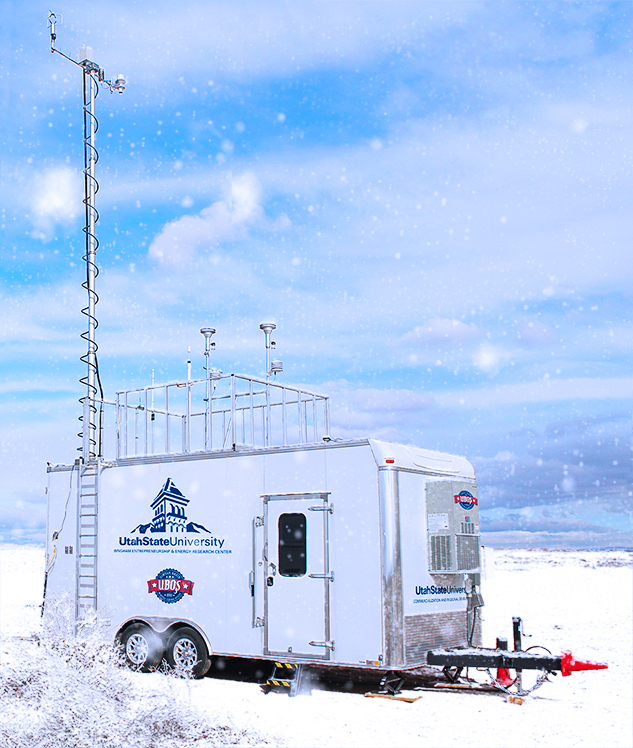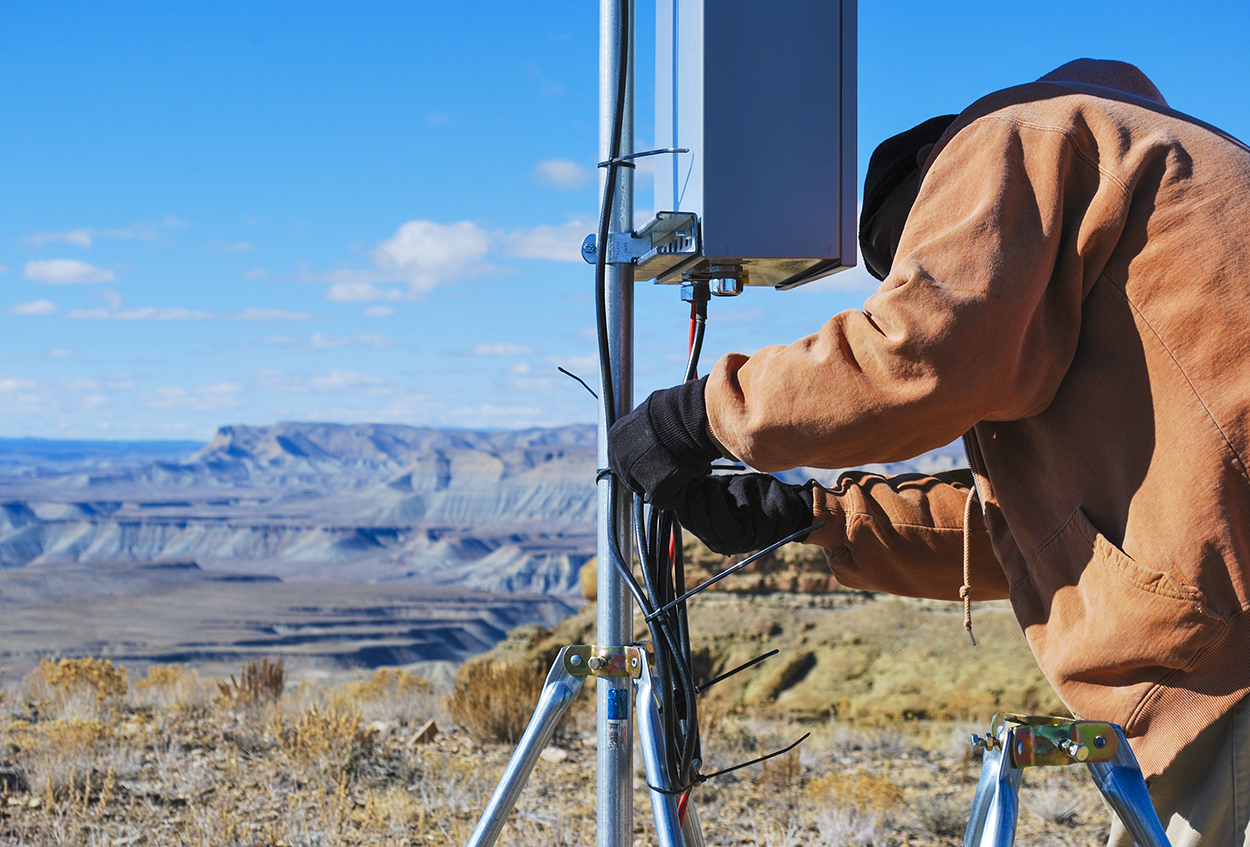Atmospheric Measurements
The Bingham Center deploys an array of high-precision equipment (from portable solar-powered monitors to fully-instrumented mobile laboratories) to measure ozone, reactive nitrogen compounds, speciated volatile organic compounds, particulate matter, and other air quality and meteorological parameters. These data have contributed to numerous local, national, and international studies and reports, presentations, and papers, including:
- Annual assessments of wintertime air quality in the Uintah Basin,
- Analyses of the potential for Western U.S. basins to experience high wintertime ozone,
- Studies of emission sources that affect air quality in the region, and
- Examinations of potential health risks from measured pollutants, among others.
 Since 2010 the Bingham Center has collected measurements of speciated volatile organic compounds, or VOC, in ambient air. VOC are important ozone precursors, and their levels fluctuate with changes in the practices and production rates of the oil and gas industry. Several studies have determined that VOC in ambient air drive observed ozone levels. Others have sporadically collected VOC measurements in the Basin, but measurements collected by the Bingham Center constitute the only long-term record of VOC that exists. Bingham Center researchers are now working to use these long-term datasets to assess how changes in industry practices and emissions affect ambient VOC levels.
Since 2010 the Bingham Center has collected measurements of speciated volatile organic compounds, or VOC, in ambient air. VOC are important ozone precursors, and their levels fluctuate with changes in the practices and production rates of the oil and gas industry. Several studies have determined that VOC in ambient air drive observed ozone levels. Others have sporadically collected VOC measurements in the Basin, but measurements collected by the Bingham Center constitute the only long-term record of VOC that exists. Bingham Center researchers are now working to use these long-term datasets to assess how changes in industry practices and emissions affect ambient VOC levels.
Also, regulatory monitoring stations around the Uintah Basin measure oxides of nitrogen, or NOx, but regulatory networks use a method that suffers from bias during winter inversion conditions because of nitrogen-containing chemicals like nitric acid that the instrument “sees” as NOx. During high ozone periods this can lead to measured NOx levels that are several times higher than reality. The Bingham Center operates NOx analyzers that use a different, unbiased measurement method. These constitute the only trustworthy ongoing NOx dataset in the Uintah Basin.
The Uintah Basin is large and its atmosphere is meteorologically and chemically diverse. The Bingham Center maintains a network of remote stations that measure ozone, precursors, and meteorological parameters that allow for an adequate assessment of air quality conditions around the Basin. These measurements not only provide the public with information about health risks in different areas of the Basin, but they help in the development of air quality models and are allowing for better decision making by stakeholders. For example, remote monitoring measurements by the Bingham Center have been used to show that ozone levels depend on elevation, and that high ozone conditions only extend to about 2000 m above sea level, even during the worst ozone episodes. This information can be used to ensure that costly air quality regulations in the Basin are restricted to the area where they will improve air quality.
 More than 30 sites around the Uintah Basin continuously measure common meteorological parameters like temperature, humidity, and wind conditions. Other meteorological parameters that are not routinely measured are important to wintertime ozone production, however. In particular, snow depth and solar radiation are particularly important to ozone production but are sparsely measured. Snow cover and snow depth are key to allowing winter inversions to form, but they are measured only at airports and in mountains as a way to monitor available water for summertime use. The Bingham Center’s sonic snow depth sensors provide valuable, real-time information about snow depth in areas of the Basin that would not be measured otherwise. Also, the Bingham Center collects the only measurements of solar radiation and reflectivity of radiation from snow in the Basin.
More than 30 sites around the Uintah Basin continuously measure common meteorological parameters like temperature, humidity, and wind conditions. Other meteorological parameters that are not routinely measured are important to wintertime ozone production, however. In particular, snow depth and solar radiation are particularly important to ozone production but are sparsely measured. Snow cover and snow depth are key to allowing winter inversions to form, but they are measured only at airports and in mountains as a way to monitor available water for summertime use. The Bingham Center’s sonic snow depth sensors provide valuable, real-time information about snow depth in areas of the Basin that would not be measured otherwise. Also, the Bingham Center collects the only measurements of solar radiation and reflectivity of radiation from snow in the Basin.
Check out our Basin Air Live Feed!
Visit https://binghamresearch.usu.edu/data-access to make a request for data

